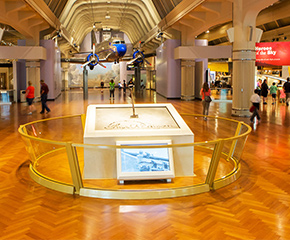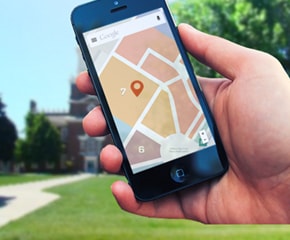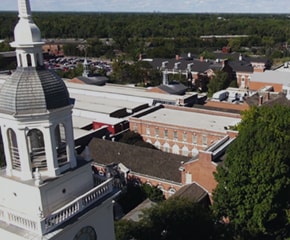Brochure and Timetable for Wabash Railroad's Blue Bird Streamliner, "The Most Modern Train in America," 1950
Add to SetSummary
The Wabash Railway, dating back to 1838, was a strong Midwestern carrier until Amtrak took over the national passenger railroad system in 1971. In 1950, the Wabash Railway introduced a completely new, diesel-powered, domed streamliner, the Blue Bird. The ultimate in luxury but at no extra fare to passengers, the Blue Bird ran the fiercely competitive 286-mile St. Louis-to-Chicago route. …
The Wabash Railway, dating back to 1838, was a strong Midwestern carrier until Amtrak took over the national passenger railroad system in 1971. In 1950, the Wabash Railway introduced a completely new, diesel-powered, domed streamliner, the Blue Bird. The ultimate in luxury but at no extra fare to passengers, the Blue Bird ran the fiercely competitive 286-mile St. Louis-to-Chicago route.
The Wabash Railway, with origins dating back to 1838, was a strong Midwestern carrier until Amtrak took over the national passenger railroad system in 1971.
Building upon the success of the City of Kansas City, which ran across Missouri from St. Louis to Kansas City, the Wabash Railway introduced the completely new, $1.5 million, domed streamliner, the Blue Bird, in 1950. This diesel-powered streamliner, painted a dark blue color, ran the fiercely competitive 286-mile St. Louis-to-Chicago route. The ultimate in luxury but at no extra fare to passengers, the Blue Bird was an immediate sensation on its inaugural run. Hundreds of curious individuals gathered at scattered trackside areas to watch the Blue Bird whiz by. Others bought a ticket so they could ride on it. The advertising booklet called it "among the most beautiful trains in America." But it was not just for the up-scale passenger. It offered a diverse fare of economical food and drink. Despite, once again, criticism of a domed car in prairie country, it was a notable moneymaker by 1952 and the star of the 1953 film, Once Upon the Wabash.
Using the word "modern" very liberally, this 1950 booklet claimed that "Your trip will be pleasant and carefree with modern comfort…modern speed…and modern safety." Economy amidst luxury was also emphasized, as passengers could enjoy "unexcelled Pullman luxury" and superb comfort at regular low coach fares. The modern "Sleepy Hollow" seats in the Observation Lounge rotated to "the direction you desire," was "adjustable to your personal comfort," and reclined to the "angle best suited to your comfort." In addition, wall-to-wall carpeting added a touch of luxury seldom seen in coaches. The dining car, seating 40 guests, had the appointments of a fine hotel. And food -- "the very best" -- was a famous feature of Wabash travel. Modern food service was also offered in the Coffee-Shop-Club, including comfortable tables "for your food or a friendly game of cards." Modern diesel power offered a smooth ride. Other modern features included a public address system for train announcements, recorded music, important radio programs, and pneumatic doors for easier walking through the train.
Unfortunately, the heyday of passenger railroading was already over. Ironically, in 1952, U.S. highway 66 from Chicago to St. Louis was converted to a four-lane thoroughfare. Over time, this led to a substantial drop in passenger train revenues.
Artifact
Brochure
Date Made
1950
Subject Date
1950
Keywords
Collection Title
On Exhibit
By Request in the Benson Ford Research Center
Object ID
2012.67.10
Credit
From the Collections of The Henry Ford. Gift in Memory of John A. Barrett.
Material
Paper (Fiber product)
Color
Multicolored
Dimensions
Height: 3.75 in (7" when opened)
Width: 8.625 in (25.5" when opened)
Inscriptions
Text on front: the most / modern / train in America...





